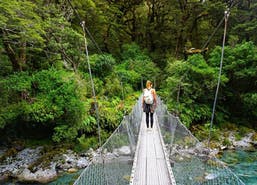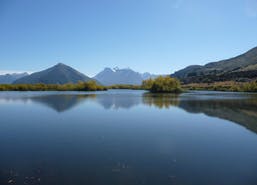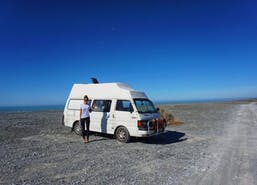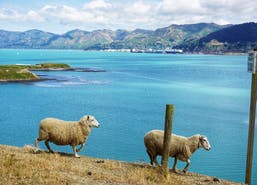My Hitchhiker’s Guide to New Zealand
One month ago, I arrived in New Zealand with absolutely no clue of where to go or how to backpack around this remote country. For the first two weeks, I traveled around the North Island by bus and car. I often got lifts with other backpackers and shared the cost of petrol.
However, during my last two weeks in New Zealand, I took a different, more adventurous route: hitchhiking. With nothing but my backpack and a sack of food, I hitchhiked 18 times around the South Island – from national parks and glaciers to the coast and rural towns. Sticking out my thumb to passing drivers became a natural habit (and a way of life).


Hitchhiking is legal in New Zealand and while it is at first nerve-wracking and scary, it is a common way to travel around the country. I remember trying to cross a busy highway in Queenstown. Instead of warning or reproaching me, a nearby road worker simply said hello and watched as I ran across the road.
As a backpacker on a tight budget, hitchhiking allowed me to save a great deal of money on transportation costs. More so, it allowed me to experience some unbelievable (albeit spontaneous) adventures and meet people from all over the world, both locals and travelers alike. I have found that there is a science to hitchhiking in New Zealand. While it’s important to be safe and smart, it also helps to keep these tips in mind:
- When hitchhiking, it’s best to stand near the edge of town vs. the town centre. Here, you’ll see road signs pointing to the next city and you’ll have more luck finding a car heading in the same direction. I have found that the farther away from town you are, the more likely a car will stop.
- It’s important to stand in a place where cars can easily pull over. Don’t stand in a roundabout or beside a yellow dotted line – trust me, there is no way for any car to stop.
- As a courtesy, don’t stand nearby other hitchhikers. Say your hello’s but remember to keep a distance! The farther you are from each other, the better both of your chances are at getting a car. It’s unlikely that a car will stop to pick up more than two people.
- In my experience, it is not necessary to make a sign of where you are headed. Holding up a sign can be dangerous because anyone who pulls over will know where you are going – especially if the driver looks questionable. The best advice I was given is to wait for a car to pull over, ask where they are going, and then assess the situation from there.
- If you’re unable to get a car within 20 to 30 minutes, walk to a different location. You’ll be surprised how your luck will change! On a good day, I was able to get a ride within 5 to 10 minutes.
- Lastly, if you are hesitant to hitchhike alone, find a travel buddy! I hitchhiked around the South Island with a friend and in doing so, I felt safer and more assured.






